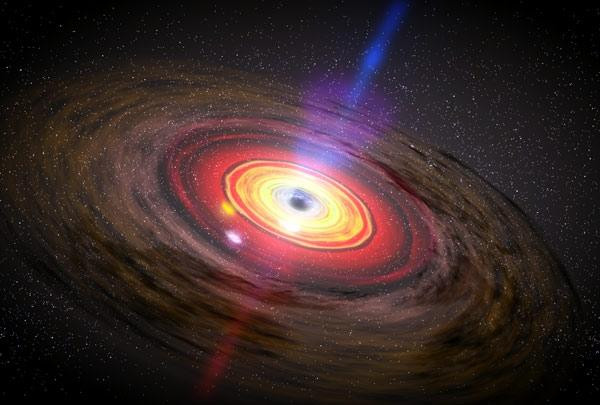First ever picture of a black hole event horizon may just have been captured by astronomers
Scientists spent five nights observing two supermassive black holes, one of which is at the heart of the Milky Way.
Scientists across the globe reportedly spent five sleepless nights peering through a massive telescope in the hope of gathering enough data that may help shed light on the mysteries within a black hole. Their efforts may have paid off as the astronomers may just have captured the first ever image of the event horizon at the edge of a black hole in the heart of our very own Milky Way galaxy.
The five nights involved scientists observing two supermassive black holes, one known as Sagittarius A* and believed to be roughly four million times the size of the sun and another galaxy at the centre of a nearby galaxy M87.
The observations made through the Event Horizon Telescope have been recorded on 1,024 hard drives located at the South Pole Telescope, which must now be flown out to the MIT Haystack and the Max Planck Institute for Radio Astronomy in Bonn, Germany, for processing. However, current weather conditions at the South Pole mean that the hard drives can't be moved till the end of October, when winter finally comes to an end.
Given the vast amount of data gathered, it is likely that we may have a long wait before getting actual confirmation of whether the telescope was actually able to capture an image of the black hole, let alone getting a glimpse of it. It is expected that the first results from the data gathered by the Event Horizon Telescope could be published sometime in 2018.
However, scientists remain ever hopeful. According to Heino Falcke from Radboud University, the first images "will turn black holes from some mythical object to something concrete that we can study".
Falcke told National Geographic: "Even if the first images are still crappy and washed out, we can already test for the first time some basic predictions of Einstein's theory of gravity in the extreme environment of a black hole."

How did scientists make this happen?
It reportedly took years of planning and cooperation among scientists across the globe from eight international observatories stretching between Hawaii and the South Pole. Their efforts helped them create a virtual telescope dish as wide as the Earth. On 4 April the radio-dish network, also known as the Event Horizon Telescope, finally looked into space for a short 10-day window.
Despite the years spent in preparation, the scientists had to deal with one major factor that they had no control over – the weather. "The probability of having really good weather at every site is almost zero," said MIT Haystack Observatory's Vincent Fish.
Fish constantly monitored the weather on each site and communicated with other astronomers, while he and his team held daily meetings over nerve-wracking decisions on whether to activate the network. However, now that the five nights of observations have successfully come to an end, scientists can look forward to the mammoth task of processing the vast trove of data gathered by the Event Horizon Telescope.
"We're trying to make coherent a network the size of the globe, which is incredible when you think about it," said Shep Doeleman of the Event Horizon Telescope at the Harvard-Smithsonian Center for Astrophysics in Cambridge, Massachusetts.
Astronomers hope that the telescope may have captured a glimpse of a halo of light surrounding the shadow of a black hole.
Regardless of whether the telescope captured an image, scientists are already making plans to try again next year, with an even wider network of radio telescopes.
© Copyright IBTimes 2025. All rights reserved.






















